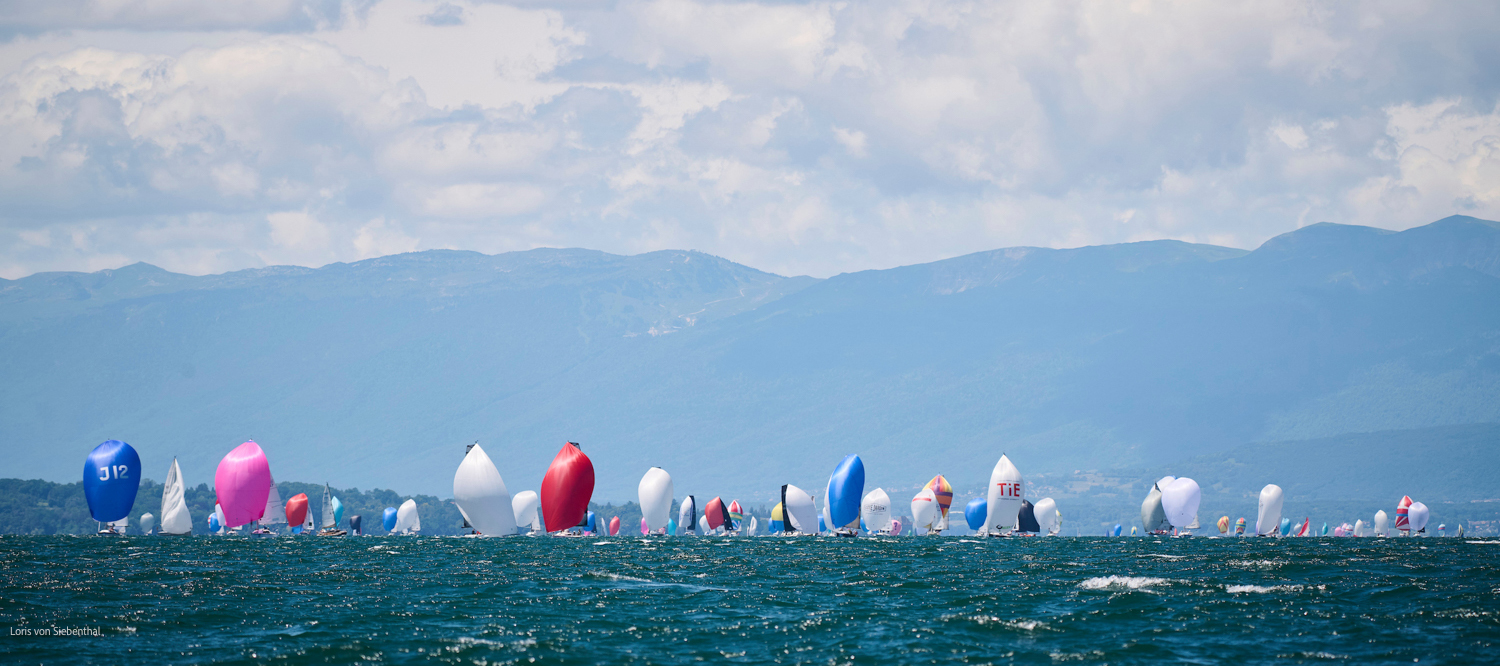by Marco Tassini
Founded in 1872, the Société Nautique de Genève is currently the largest nautical club in Switzerland with over 4,500 members. Excellence and sporting performance are integral parts of the Nautique Society DNA. The organisation of the Bol d’Or Mirabaud and the rowing Léman tour perfectly illustrate the commitment to elevate nautical sports to the forefront of the national and international stage.
The two America’s Cups won under the club’s colours in 2003 and 2007 by Team Alinghi are representative of the sporting ambitions of the Société Nautique de Genève and its determination to raise the club’s flag to the highest global level in all represented disciplines. Training is also at the heart of the priorities for the Société Nautique de Genève and its schools, which pay special attention to the next generation to train the sporting elites of tomorrow.
“We have many members who sail at sea, with several deeply involved in SWAN and TP52 regattas. Additionally, all our junior teams participate in various championships in Optimists and Lasers, traveling across Europe and even worldwide. As a result, they are well-trained and familiar with saltwater sailing. Our training programs here produce excellent competitive sailors for both small triangular races and cruising races. We’ve seen good results in events like the Tour de France à la Voile, and we have Justine Mettraux preparing for the Vendée Globe around the world at the end of the year. Many of our sailors also participate in the America’s Cup.
Lake sailing is very complex, with about forty different winds, including two dominant ones: the west wind and the bise. The bise can vary by about 30 degrees in its impact on the lake, while the west wind, which you mentioned, can be a bit northwest, and the vent blanc is more southwest, influenced by the heat in the Rhône plains.
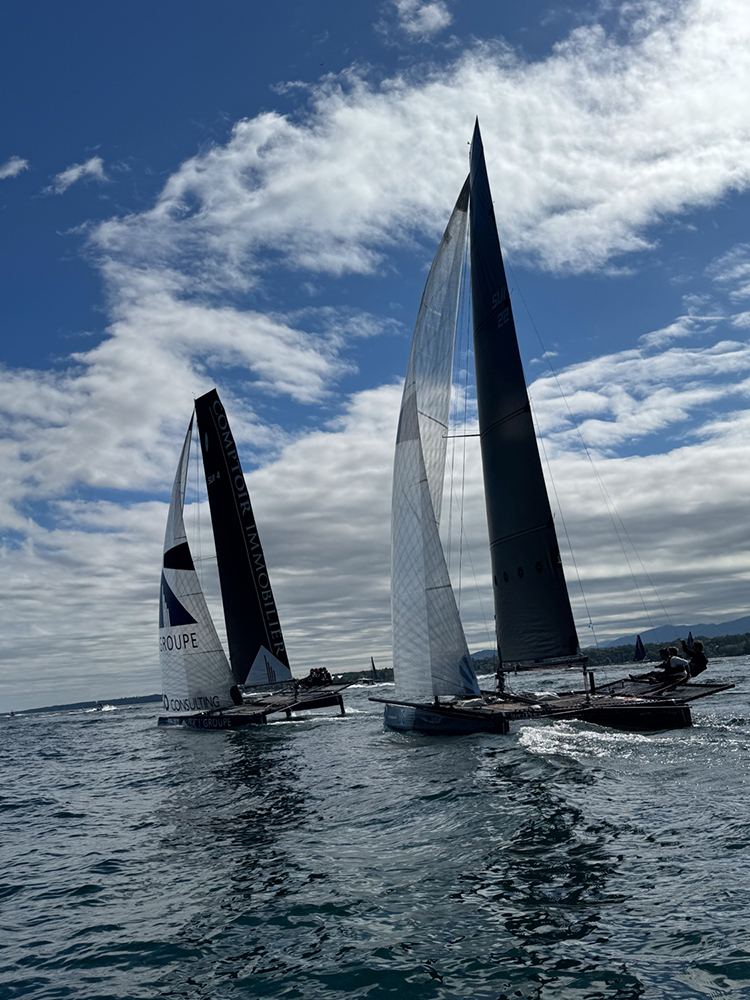
The Bol d’Or is a race that has existed since 1939, and its configuration has changed significantly since then. The record time for the Bol d’Or was long held at 11 hours 40 minutes. However, with the evolution of multihulls, carbon, plastic, and synthetic sails, the current records are now between 4 and 5 hours, cutting the time by more than half.
Within the race, there are other races: the M2 race, the TF35 race, and the monohull race. There are many categories and classes within these categories. A boat can belong to a category that is a classification of a national rating, winning that category and also its series. Typically, winning the series and the category means winning the series.
However, the reverse is not true. A boat can win its series without being first in the category because other series might use a compensated time system. So, there is real time, compensated time, different series, and different categories, creating a joyful general celebration.
There are people who set off with 50-year-old boats, enjoying a fondue or ratatouille and reheating a good meal in their oven. Anyone can join. The race requires a crew of at least three people for safety reasons, necessitating a national sailing license for the boats. From there, anyone can register.”
Pierre Girod President of the Centre Nautique de Geneva
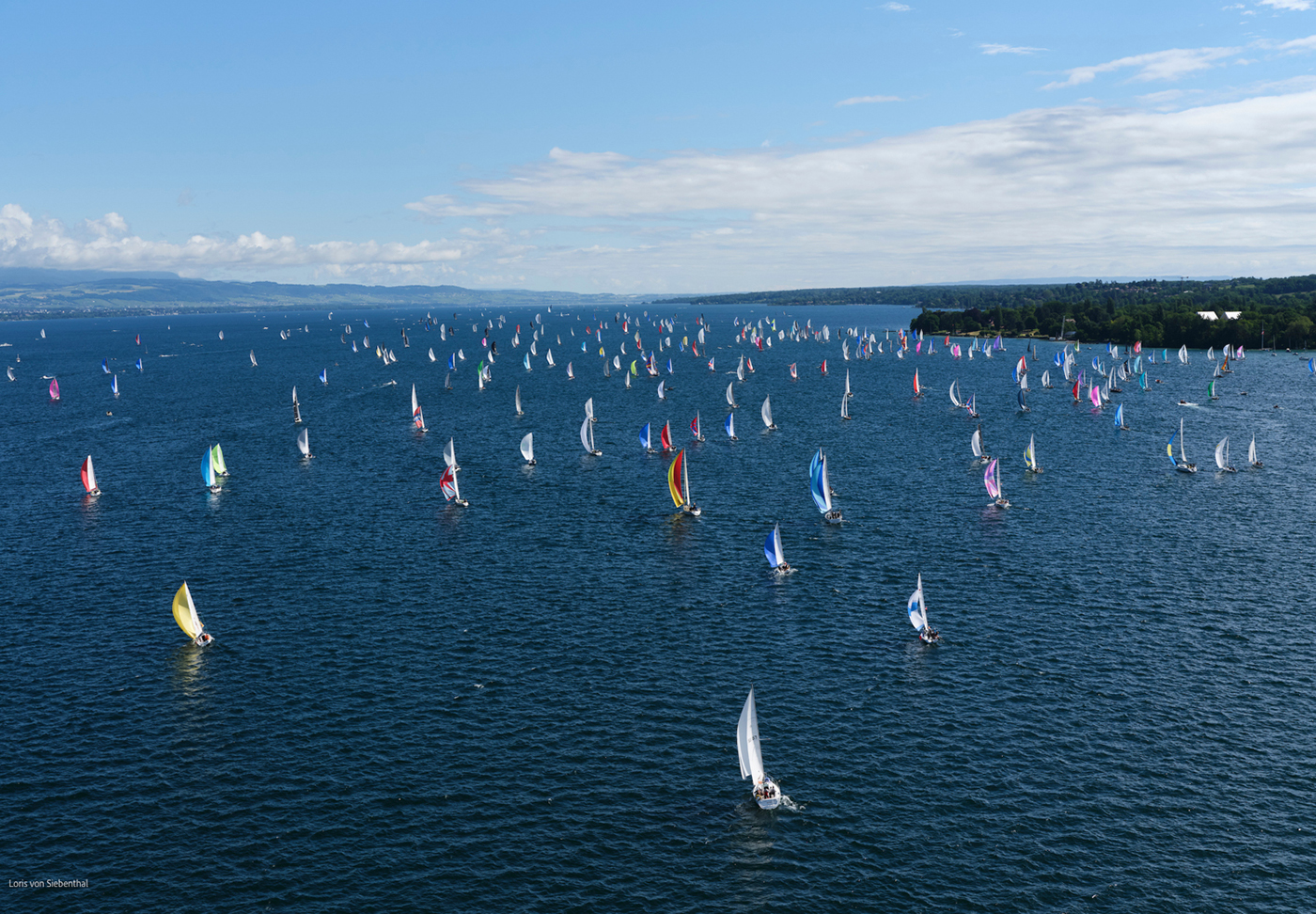
The Bol d’Or regatta
The Bol D’Or it’s a competition founded in 1939, just before World War II. Switzerland was a neutral country, and the political issues the Swiss faced were not the same as those the rest of Europe faced.
It was incredible to meet with Yann Peterman, President of the Organising Committee.
M.T. : Please tell us about the competition, and especially about its history.
Y.P. : “Looking back, we might say that Switzerland was perhaps a bit naive. We found in the Bol d’Or foundation archives articles, minutes from boat owners who were concerned about how they would import wood into Switzerland to build teak boat decks to win the Bol d’Or, while the rest of Europe wondered how they would go to war against Nazi Germany. Not quite the same problems.
The first edition of the Bol d’Or in 1939, the Germans occupying nearby France told the Swiss that if they held their regatta, they could not cross into French territorial waters, or they would be shot. The Swiss said they would still hold their regatta. I think it’s not provocative but rather a sign of passion and determination to live their passion no matter what.
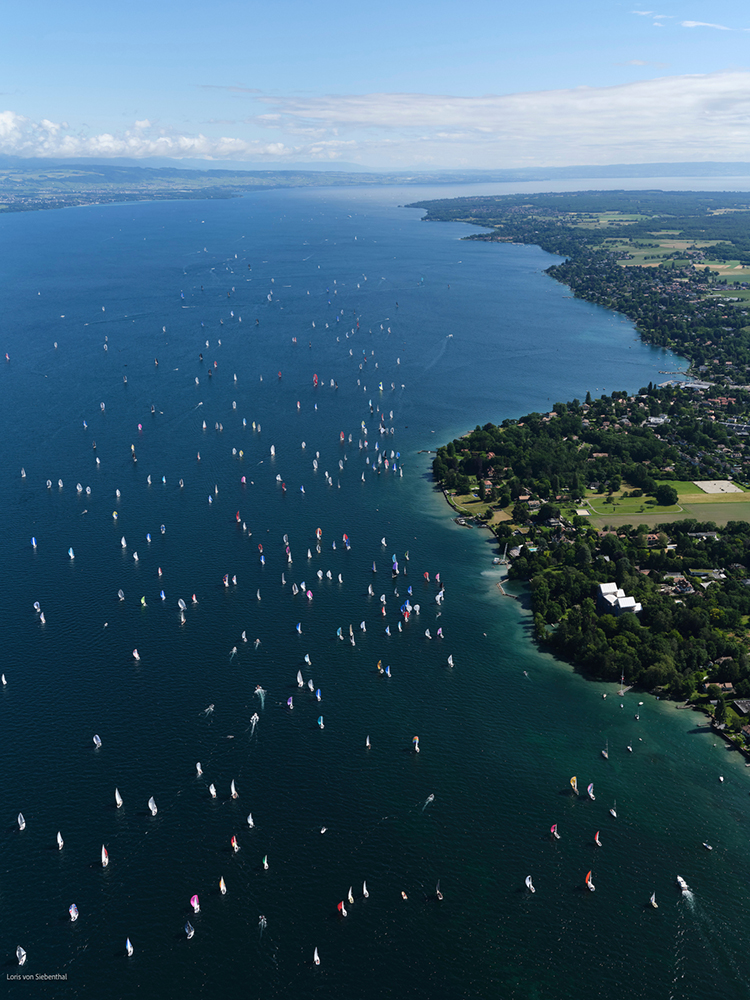
©images Bol d’Or Mirabaud -2024/ Loris von Siebenthal
& @Marco Tassini for Edge magazine
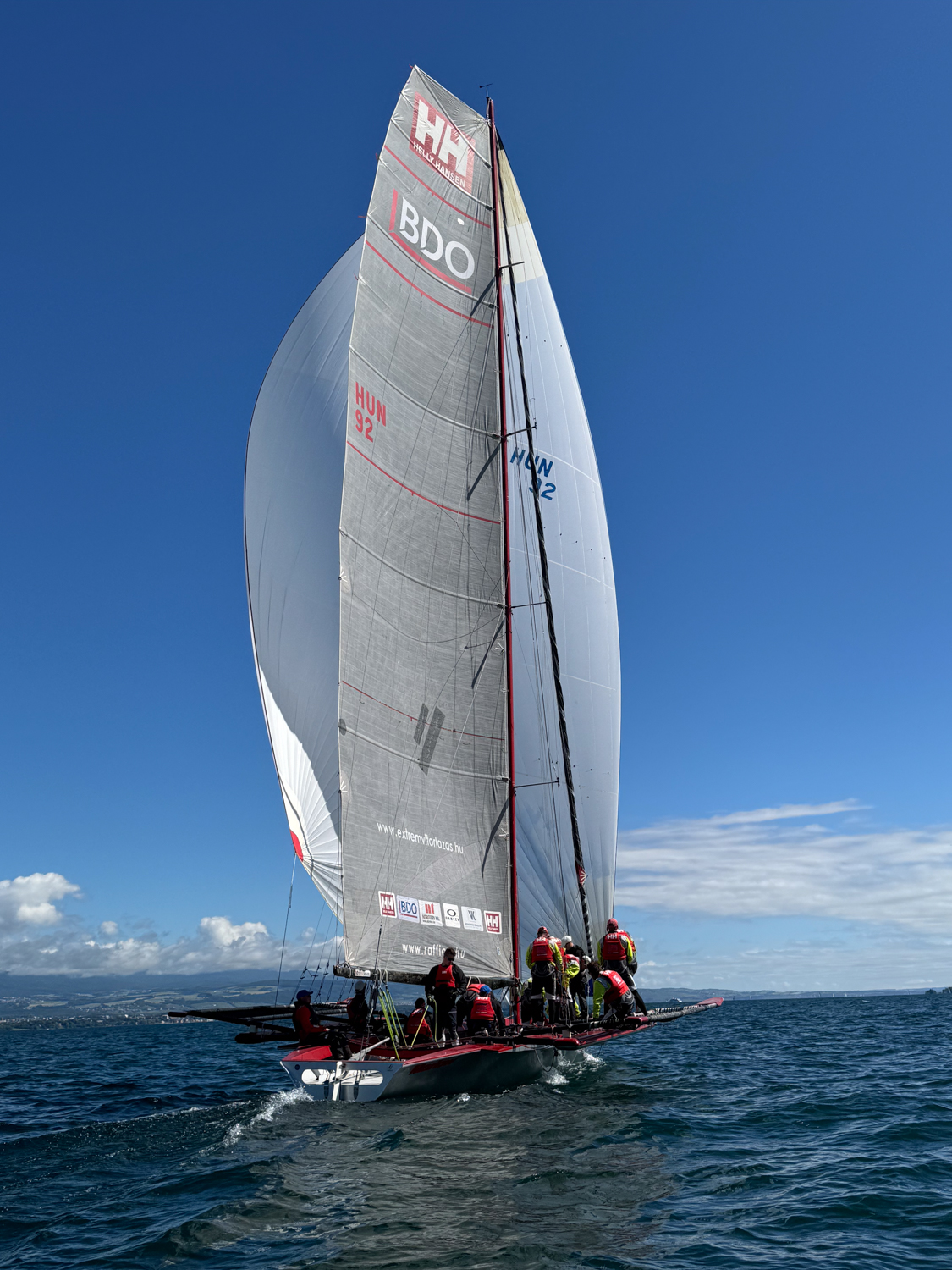
I think it’s a nice nod because for 85, the regatta has always operated this way. An effervescence of enthusiasts at all levels come together for this race. There are enthusiasts who race competitively, and there are those who love the lake, who come with their motorboats to contribute to the race’s safety, provide surveillance, be part of the jury, or the race committee.
Ultimately, we see that all the lake’s stakeholders during this weekend are focused on the Bol d’Or Mirabeau, each contributing to its success. That has a bit of magic because there are 150 volunteers on the ground for welcoming competitors, distributing materials, making classifications, timing, etc.
This is very unifying, and it all works through volunteering; people give of themselves. This creates a bond, and that’s something we like. The Bol d’Or Mirabeau has always been a race since its founding where people said, “We want to go further.” Back then, the boats were smaller, and people sailed in the harbour here, maybe reaching the middle of the lake, but further, they didn’t know if they could come back. They didn’t dare.
In the early editions of the Bol d’Or, with 30 boats on the starting line, going to the end of the lake, people said, “You’re crazy.” It was an achievement. Today, it’s normal. And throughout the evolution of the race, especially from the 70s to today, people have taken on this Bol d’Or challenge.”
Geneva is a city of immense wealth and innovation, home to prestigious universities and groundbreaking advancements. As the saying goes, “With the conditions we have here—short waves, minimal wind, large sail areas, and relatively low freeboard boats—how can we push the technological envelope further?” The first multi-hull boats were pioneered in Geneva before being spotted in the Atlantic or at sea. There are archival photos from the 70s showing enthusiasts tinkering with multi-hulls in their garages or backyards.
In his book, “The Multi-hulls of Lake Geneva,” journalist Bernard Schoepfer delves into the history of these pioneers who, in the late 60s and early 70s, were already building multihulls to increase speed. The first rigid sails, reminiscent of those on Oracle during the 2010 America’s Cup, appeared in Geneva in the 80s, with sails crafted from balsa wood, plywood, and Delta paraglider fabric. Many prototypes seen later in major international races and ports worldwide first took shape in Geneva.
This year’s Bol d’Or unfolded as predicted, delighting the 398 participants who embarked at 10 a.m. on Saturday. After a rain front passed late at night, a robust southwest wind settled over Lake Geneva. This favorable wind led to the impressive sight of numerous spinnakers unfurling near Port-Noir.
On race morning, six TF35s lined up alongside more than 400 boats and 3500 crew members at the Société Nautique de Genève start line. As the start cannon sounded, the TF35s lifted onto their foils in the 8-10 knot breeze, quickly reaching speeds of 25 knots. Guy de Picciotto’s ZEN Too led the fleet for the first 30 minutes until Ylliam 17 surged ahead, sailing at full speed down the center of the lake, with the other TF35s in close pursuit. Realteam Sailing hit a top speed of 33 knots as the race clocked over one hour, with the fleet racing past Evian.
However, Lake Geneva’s unpredictable nature soon asserted itself. At 1 hour and 32 minutes into the race, as the TF35 fleet passed Meillerie on the French side, the wind vanished, halting the TF35s and extinguishing hopes of a record-breaking run. The teams then focused on keeping their boats moving through the calm, taking an hour to delicately navigate the final 11km to Bouveret.
During the short downwind leg from the clearing buoy to the turning barge, Sails of Change 8 moved from sixth to third overall, behind Realteam and Ylliam 17.
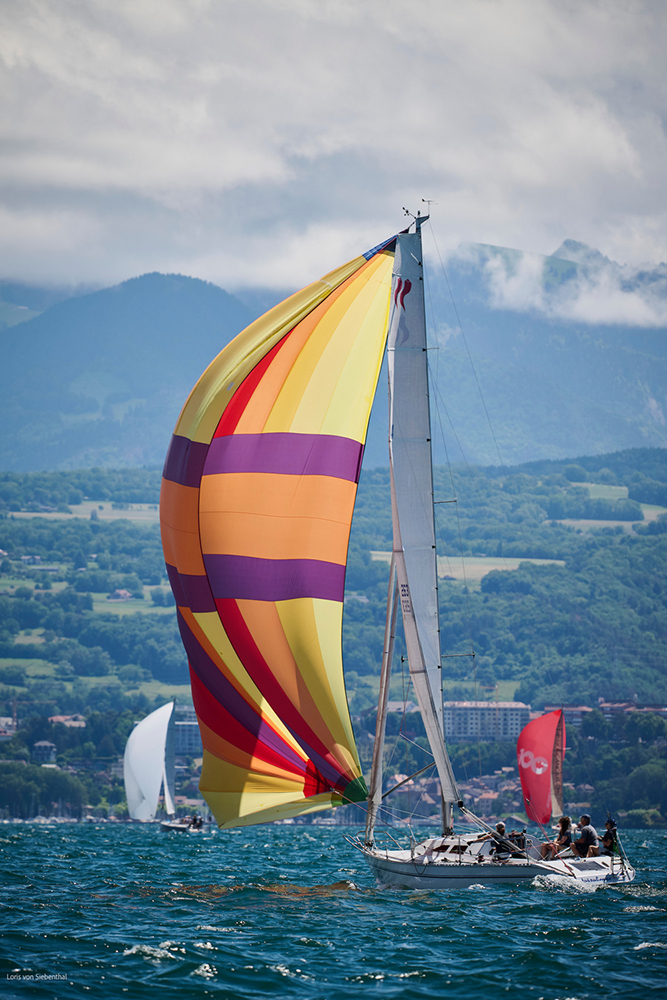
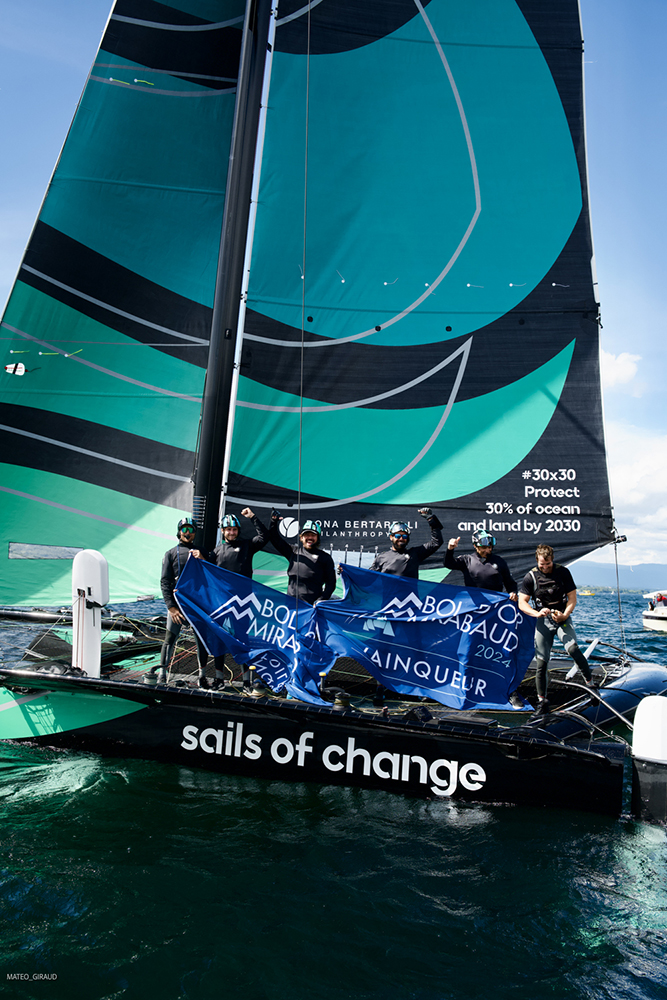
From Evian, the boats encountered a 14-knot southwesterly breeze, sailing upwind at over 19 knots towards Geneva. Ylliam 17, helmed by Julien Firmenich, initially led, but Sails of Change 8 and Realteam were close challengers.
“We tried to tighten up on the left until we overtook Ylliam 17. Once we were in front, we dug in on them, but Realteam Sailing came back very strongly. We tried to stay constantly between the finish line and Realteam. We didn’t make any mistakes; the plan worked well,” said Sails of Change 8 tactician Noé Delpech.
In the final stretch, Sails of Change 8 maintained a narrow lead over Realteam, with Ylliam 17 close behind. However, a tactical move by Ylliam XII – Comptoir Immobilier allowed them to overtake and secure third place, relegating Ylliam 17 to fourth. ZEN Too finished fifth, while Sails of Change 10 did not finish.
TThe 2024 Bol d’Or Mirabaud was a remarkable showcase of resilience and skill, featuring a spectacular display of strategic racing under challenging conditions. Sails of Change 8 emerged as true masters of the long-distance race in a TF35, clinching victory in the 85th Bol d’Or Mirabaud with an impressive time of 6h22m24s. This triumph follows their earlier success in the Genève-Rolle-Genève, solidifying their dominance and expertise in competitive sailing.

